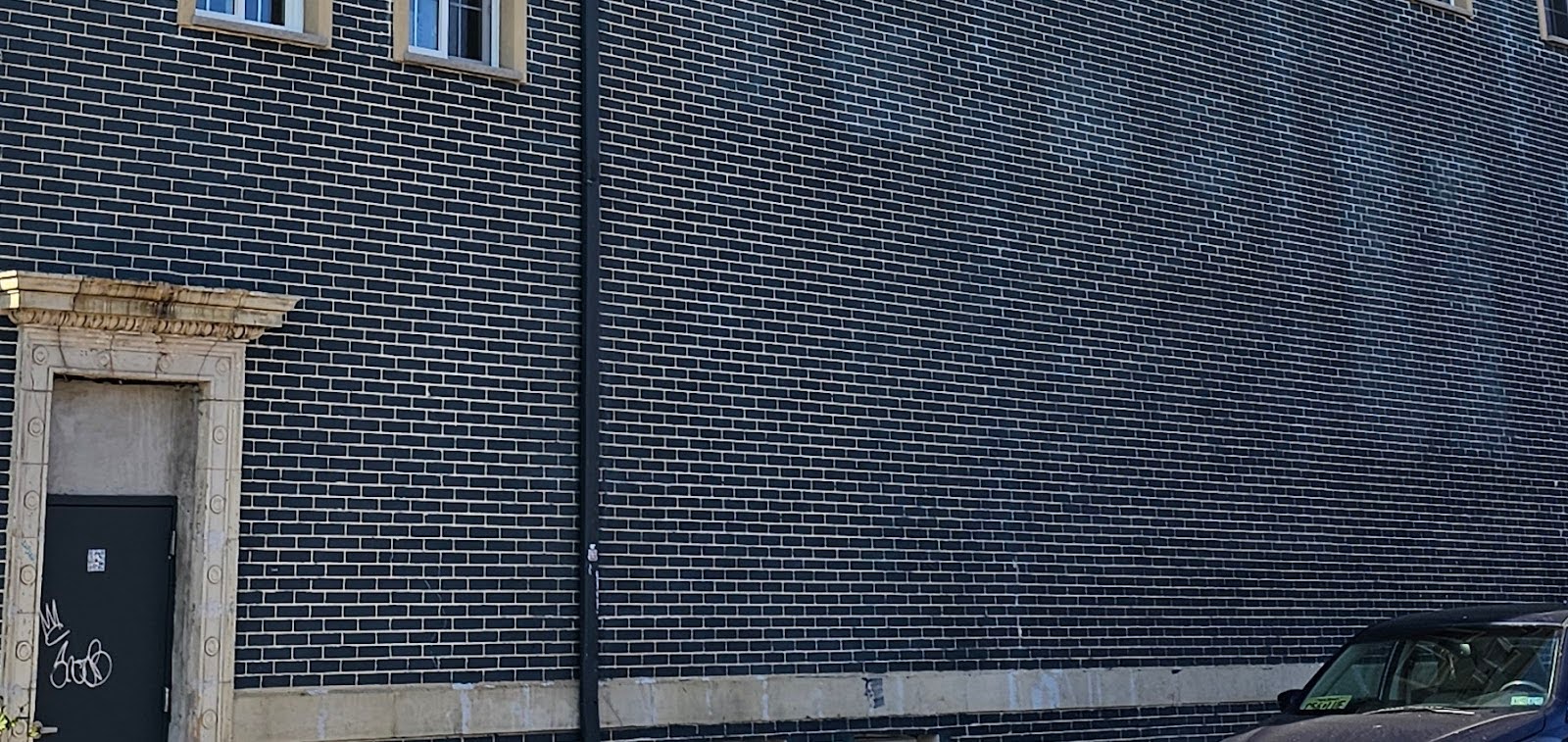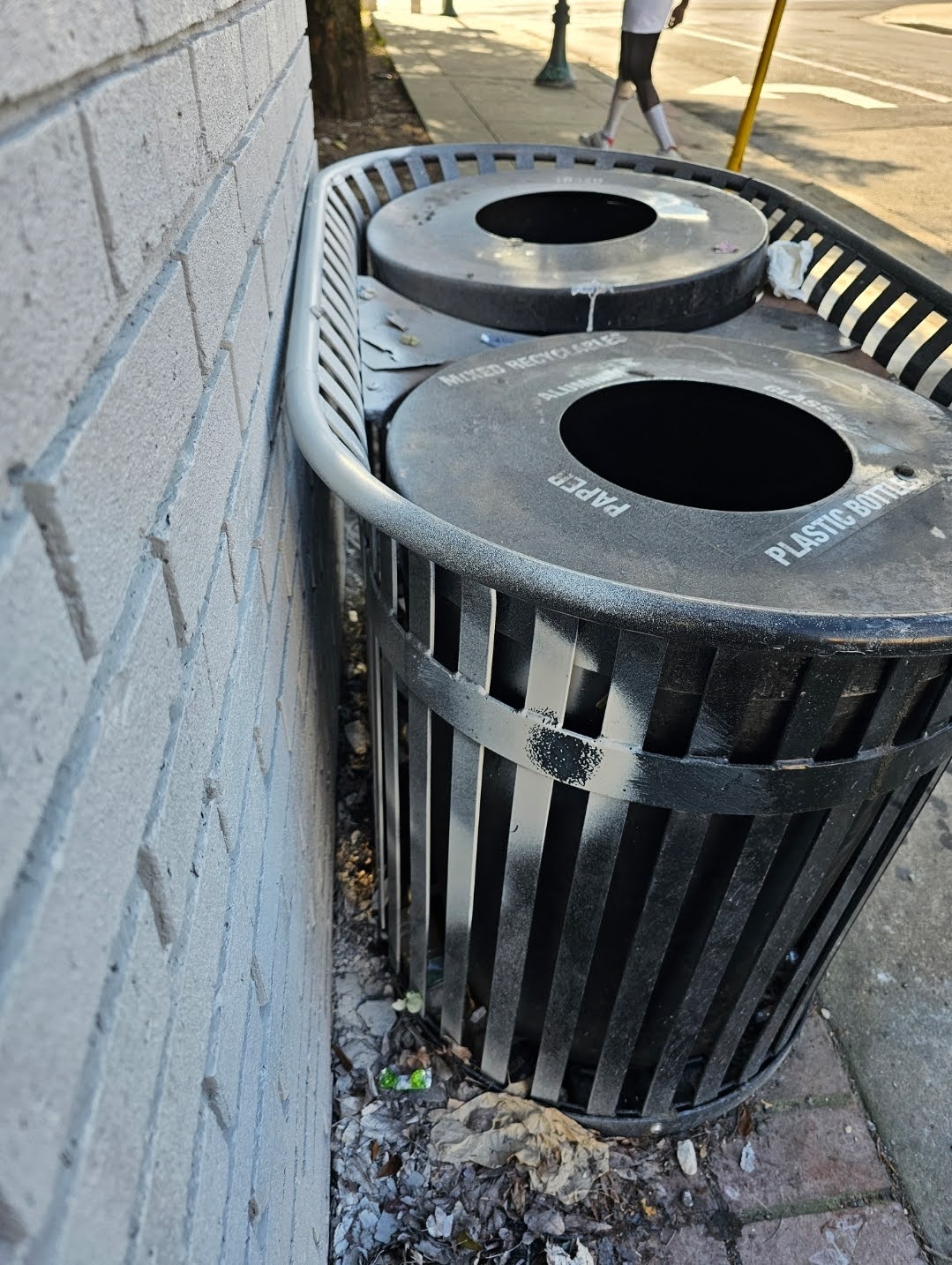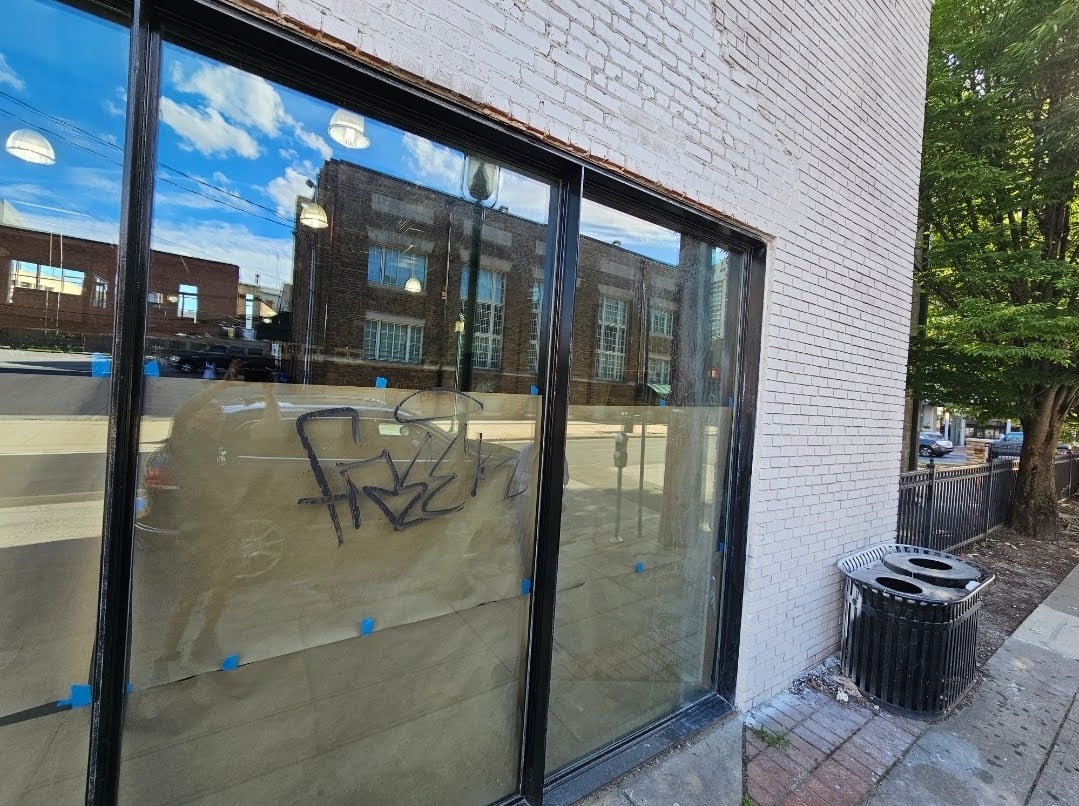Over the past several weeks we’ve looked at several of the issues surrounding the topic of brick spalling. Often in historic masonry facades when masonry bricks have not been maintained or properly restored over the many decades since their original construction, bricks and masonry, including mortar joints will deteriorate and with water interioration, bricks become spalled and damaged from water entry and several other causes related to insufficient upkeep. Today we’re starting a multi-part series looking at some of the primary causes of brick deterioration and particularly bricks falling. We discussed this list in our last short series on bricks spalling. Some of these main causes follow below. In an article a few weeks ago, we said that the following causal factors are so common that we see them over and over again as the root origin for damage that leads to bricks spalling in historic masonry facades:
- Overhydration
- Low-temperature firing
- Freeze-thaw conditions
- Hard mortars
Today, we start by looking at the issue of over hydration, but will start with a wall that is actually clad, at the exterior, with a stone skin. This stone masonry at the exterior facade is actually backed up by a structural brick assembly, but the exterior face is skinned with a historic sandstone. Sandstone masonry is significantly different from the typical brick exterior facade, yet there are still similarities and these types of buildings were built within the same time ranges which we would classify as within the historic era, prior to over 100 years ago.
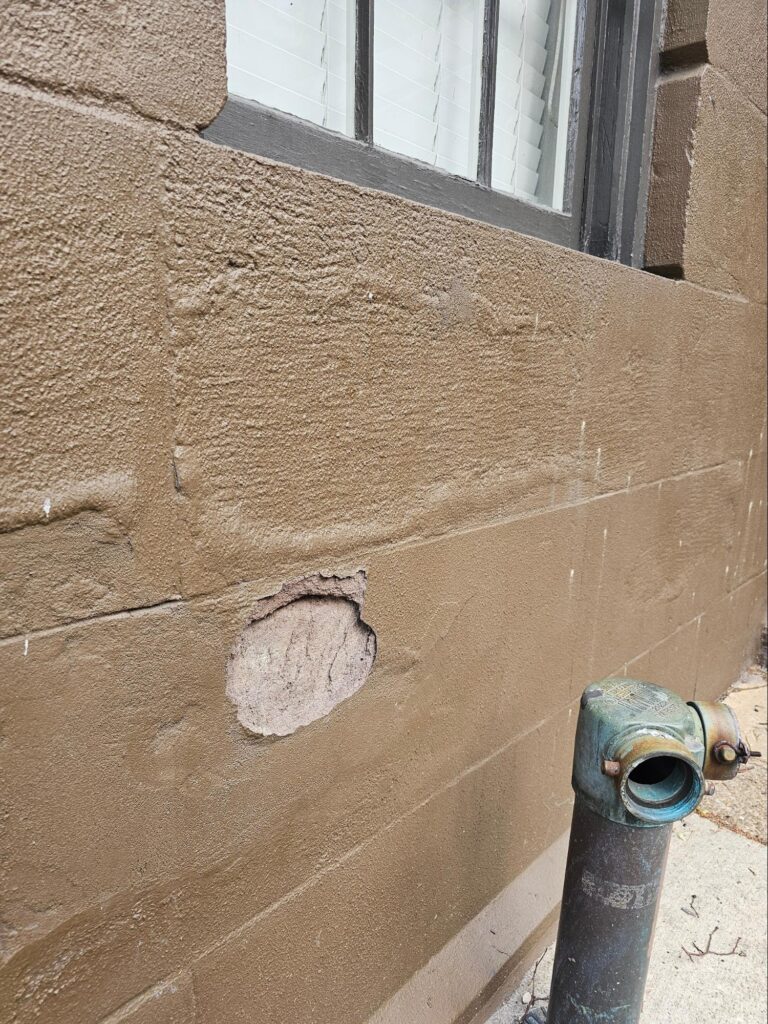
A closer view of the spalling and deterioration follows. In the picture above, you can see that as water builds up above the area of deterioration, water puddles at the sill and then is funneled down to this spot on the wall, leading to overhydration.
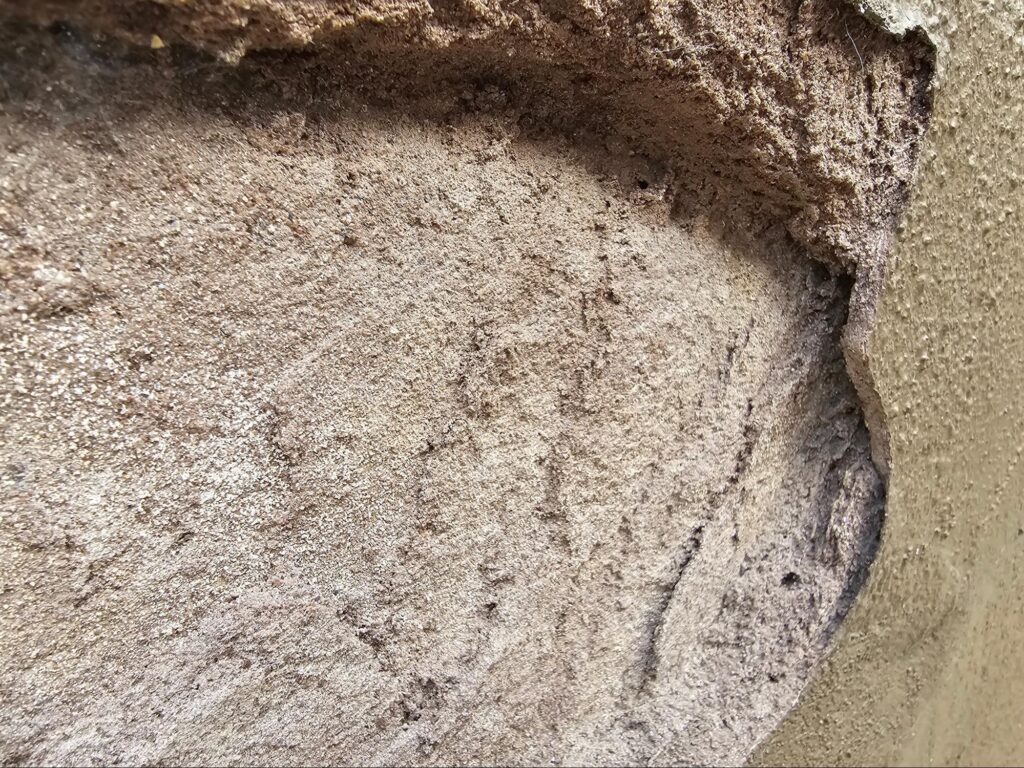
Unlike typical brick facades though, at the particular wall the ratio of mortar to masonry facing is significantly skewed. And the typical brick facade you might have a ratio of about 77.5% brick face to about 22.5% exposed mortar facing. This ratio varies slightly between different types of brick bonds and the amount of exposed mortar to brick ratio will vary significantly between different types of mortar joint walls. For example, in a typical common brick facade, the amount of exposed mortar will be significantly higher than in pressed brick facades which are known for very thin mortar joints. Those mortar joints generally have a higher ratio of lime and have a higher PSI or compressive strength resistance and a higher temperature fired brick. The amount of exposed mortar facing is less than half the amount of exposed mortar in a typical common brick facade.
The main takeaway though is that brick facades generally have a much higher ratio of exposed brick face than mortar face yet, when mortar joints are not maintained and properly cared for, as they age and deteriorate, the mortar joints will become one of the leading causal factors for water entry into the brick facade and therefore into the brick masonry assembly. As water enters into the interior portions of the brick assembly, the masonry becomes overhydrated which leads to several different types of problems. These problems will often lead to critical damage at the face of the brick in the form of brick spalling.
If we back up, for a moment, and just look at this specific issue of brick masonry overhydration, you can focus on some of the causes of overhydration. Every facade and wall layout is slightly different. There are different materials and different configurations. Exterior or auxiliary elements such as trees and or tree cover, cardinal direction in relation to the layout of the building and the path of the sun on a daily basis, and climate zone all affect a building’s interrelation with the environment. In today’s article (and in the upcoming week’s article), we studied these different impacts to overhydration, starting with some of the major causes of overhydration.
The picture below shows an example, like many examples that we see on a daily basis out in the field, where a downspout is terminated just a little bit shy of a point where it could effectively dispel water away from the brick facade. However, at this particular location water will splash back and run in a concentrated way against the brick which leads to deterioration or accelerated degradation of the brick mortar and over hydration of the brick masonry.
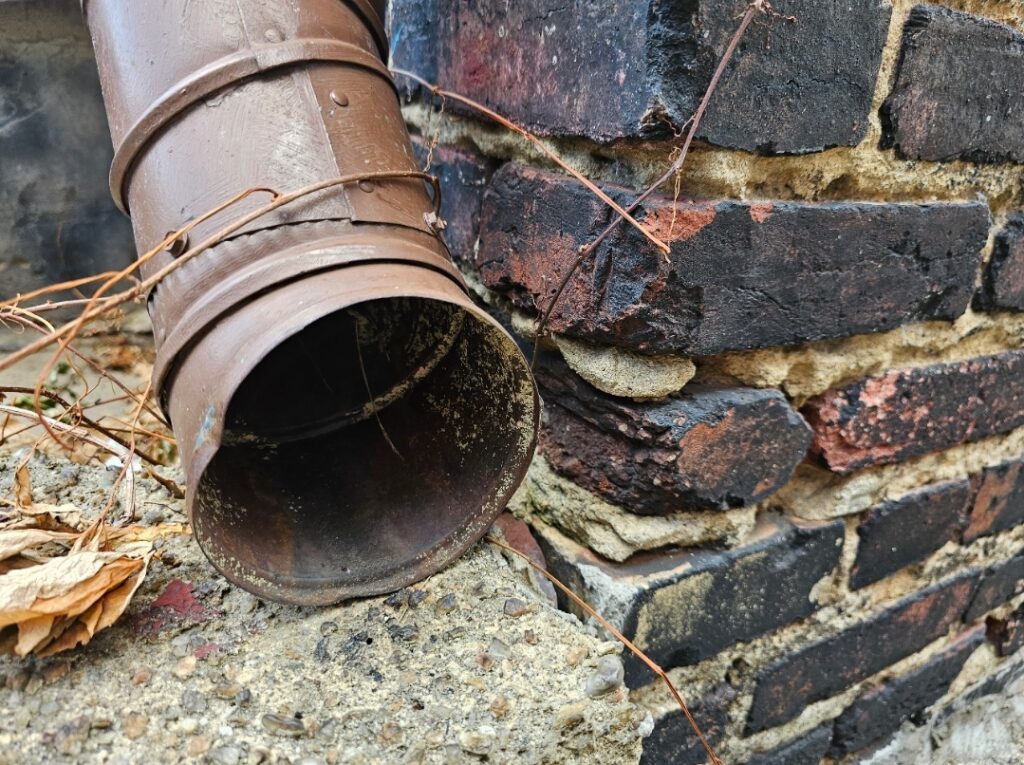
The closer view of the brick masonry shows bricks that have both deteriorated mortar joints surrounding the brick itself and also a brick face which has spalled and cracked or deteriorated with a now recessed shape inside of the original exterior facade profile.
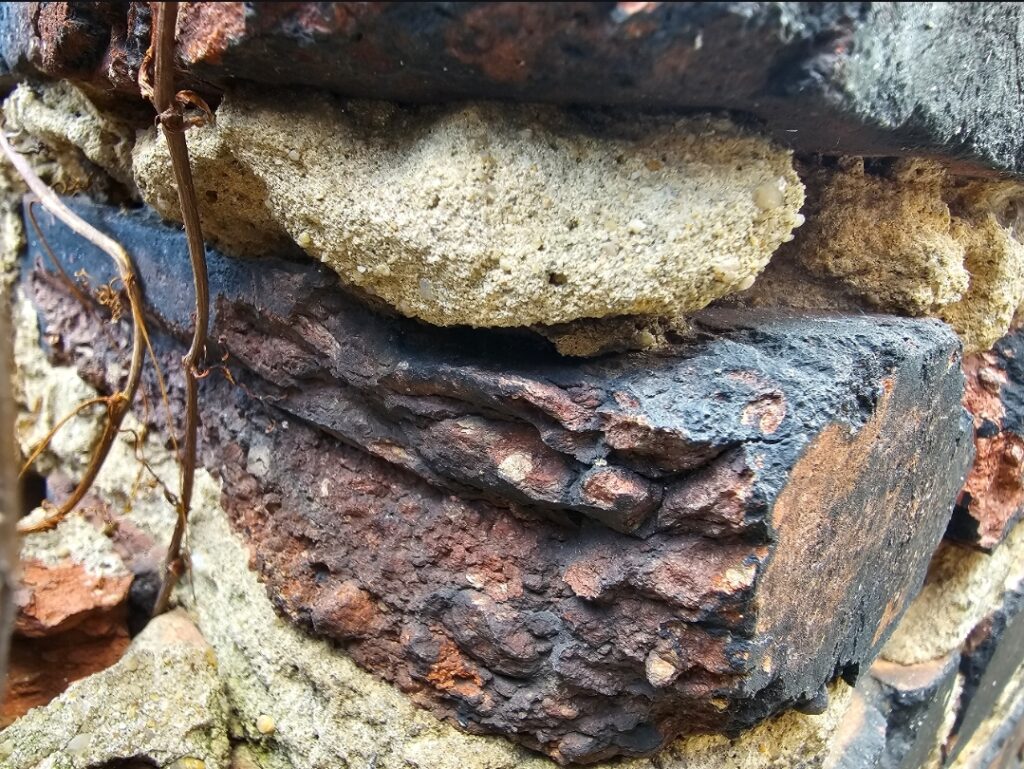
We often talk about how brick pointing, repointing or tuck pointing of historic brick masonry can save the building from significant deterioration and damage, and while that is completely true, here the issue is compounded by water that is not properly diverted from the roof.
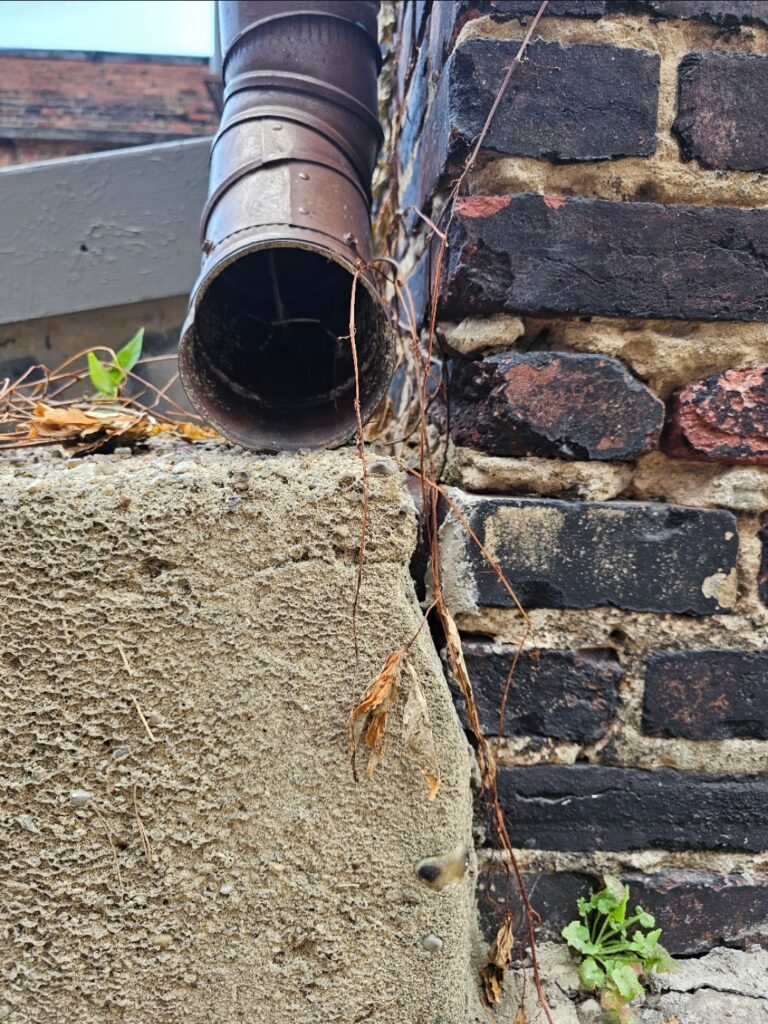
Eight of the main causes of overhydration follow:
- Opening headers or sills without proper bevel or can’t to shed water consistently away from the facade
- Roof terminations, grade,and water diversion systems not properly graded or directed.
- Rising damp from the ground into the foundation and or base of the wall.
- Faulty or damaged gutters and downspouts
- Improper drainage around the building perimeter
- Use of inappropriate materials in restoration (e.g., cement-based mortars)
- Prolonged exposure to driving rain or floods
- Condensation due to poor ventilation
In this coming week’s blog article we will look closer at each of these eight main causes of overhydration in masonry wall assemblies. This will set the stage for understanding the mechanisms of damage that follow.
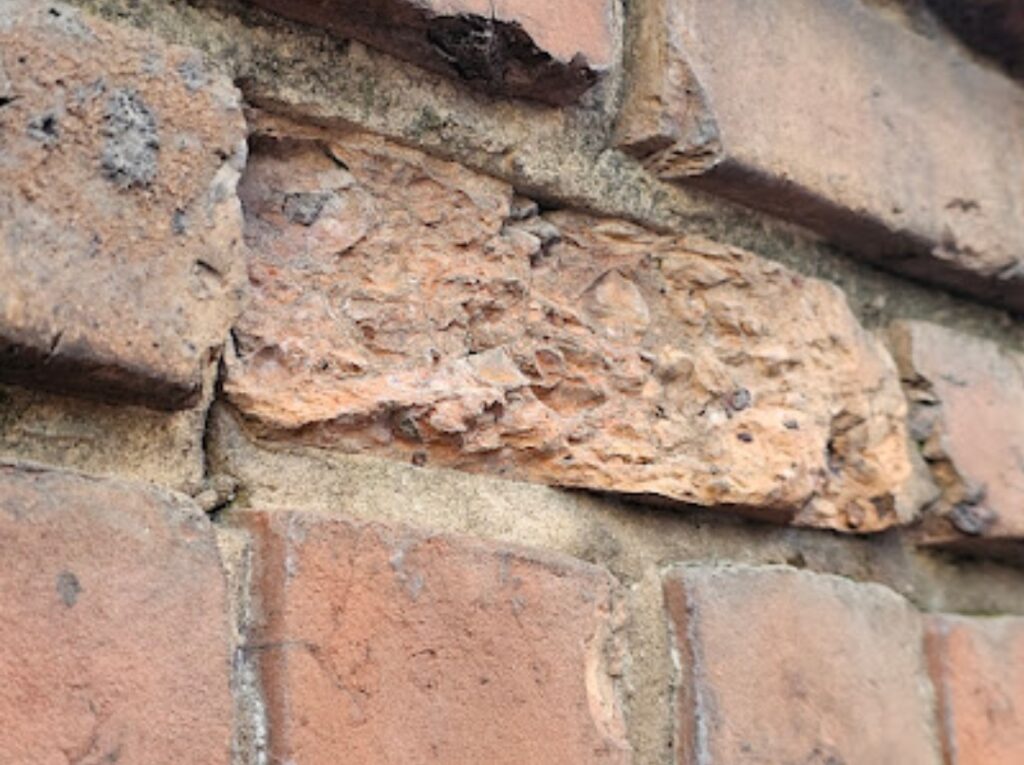
As we have mentioned before in past blog articles on our company’s website, any interventions or treatments for historic masonry should be done with care and under the guidance of experienced professionals, like our company, to ensure the preservation of the building’s historic integrity.
You can reach us by telephone at (202) 796-7644 and you can reach us by email from the contact form on our website at https://duponttuckpointingmasonrydc.com/contact-us/.

